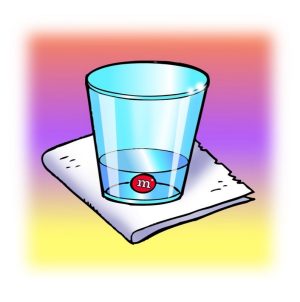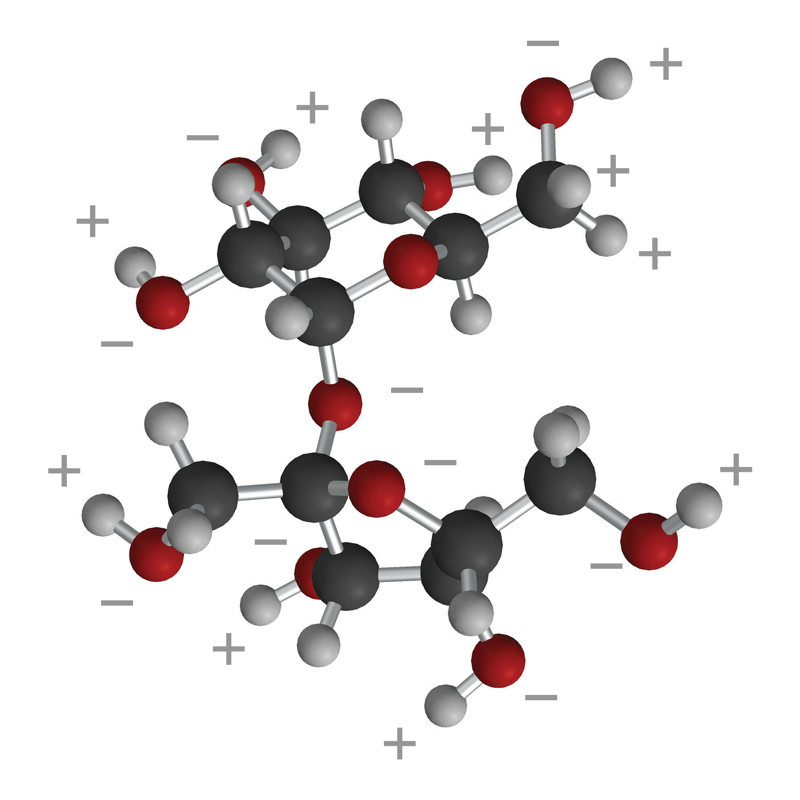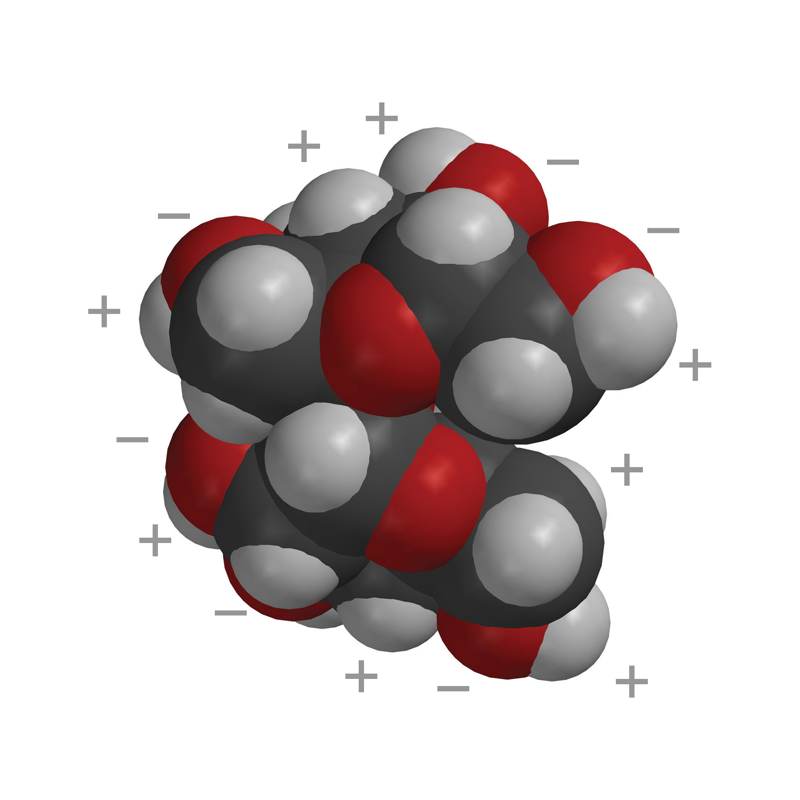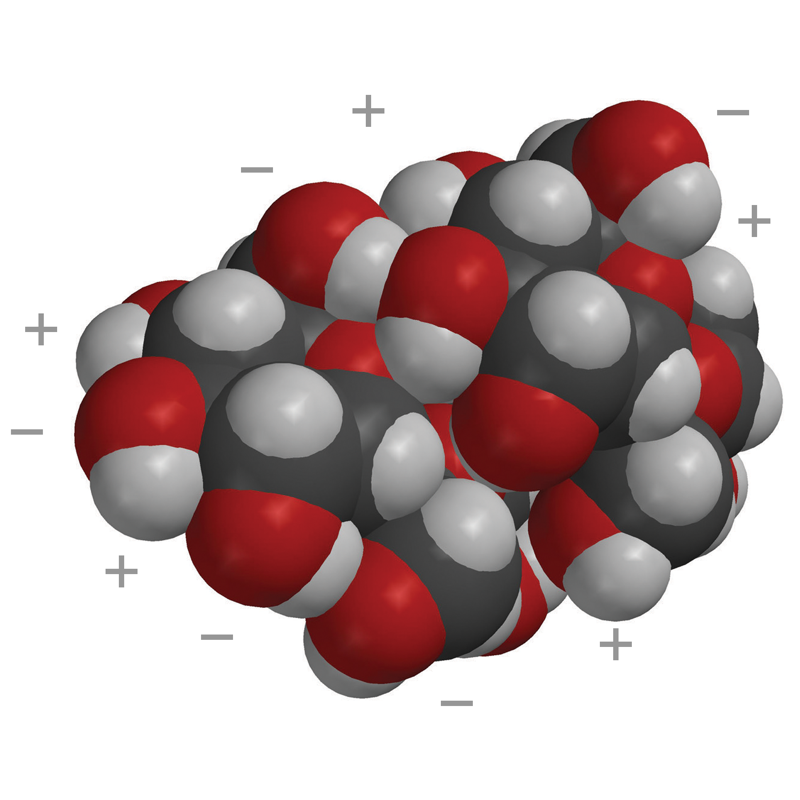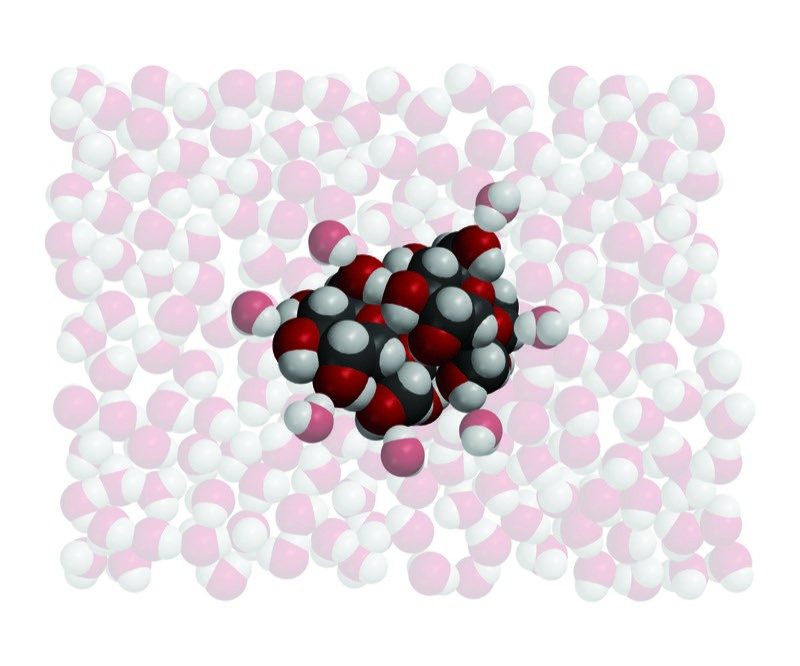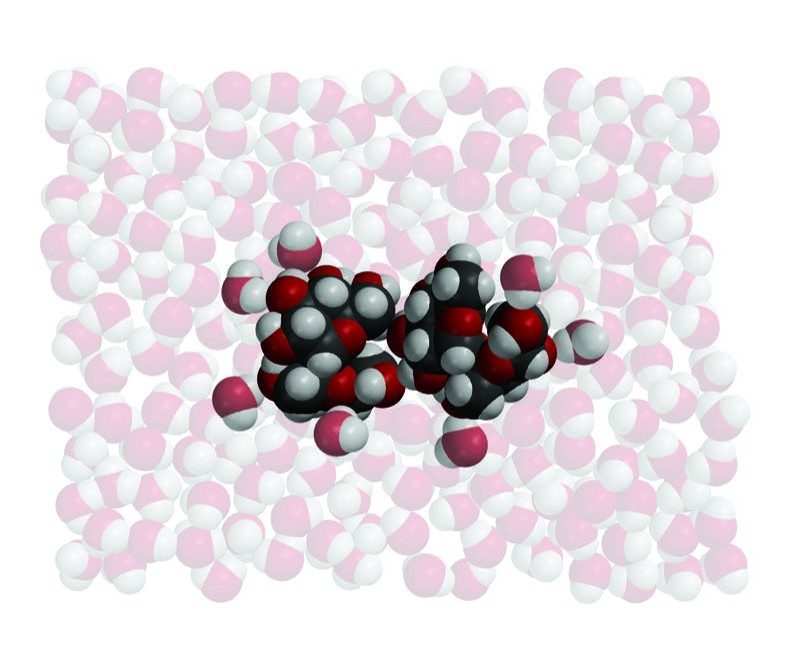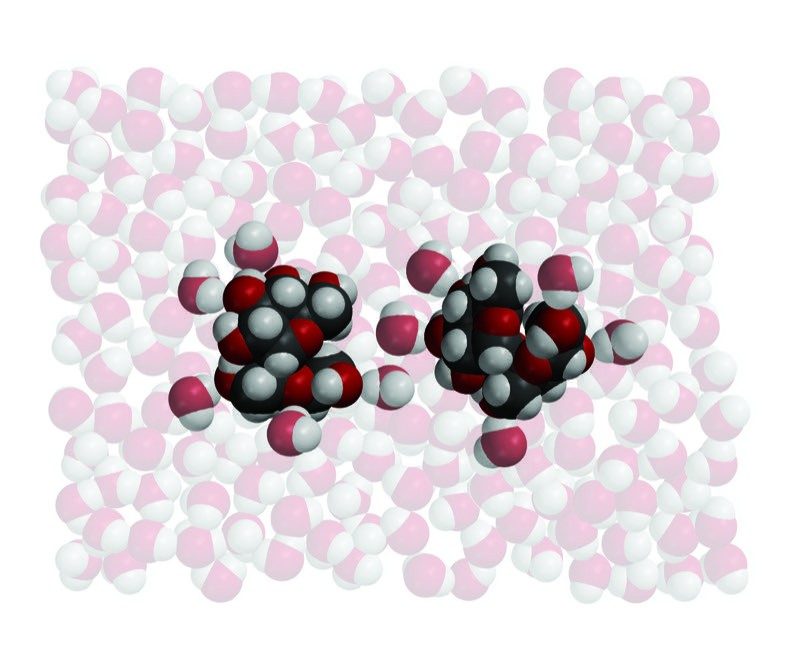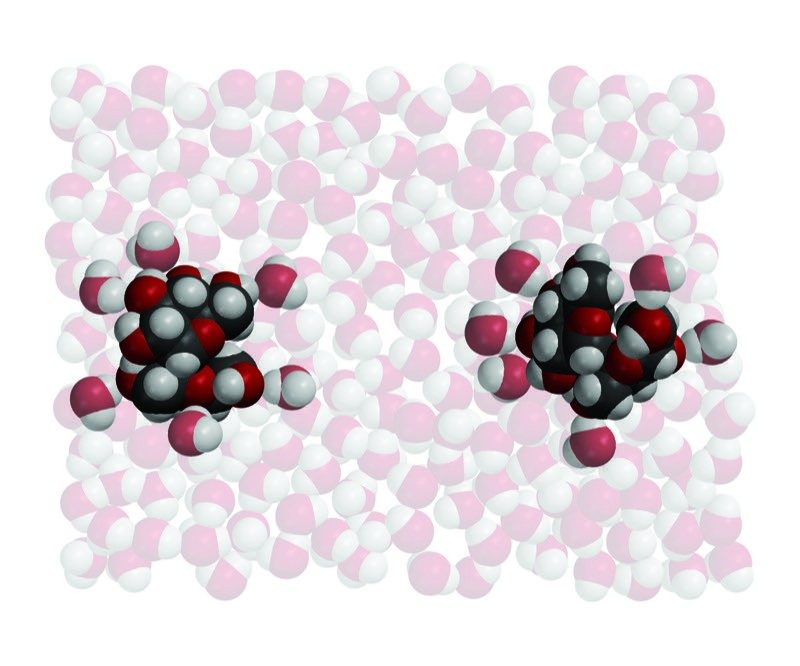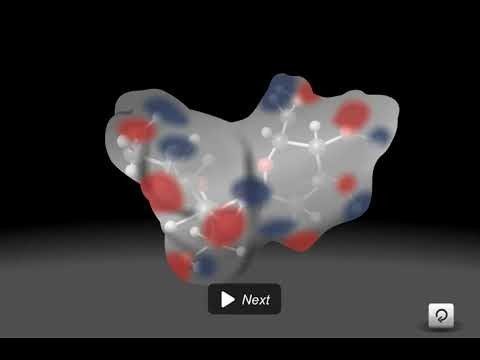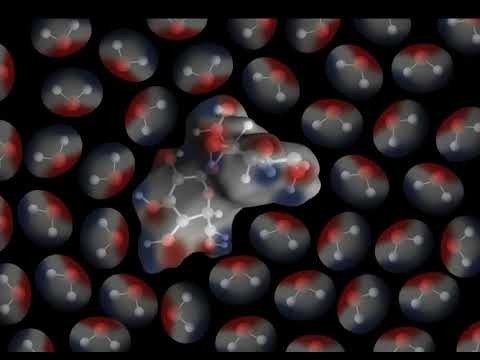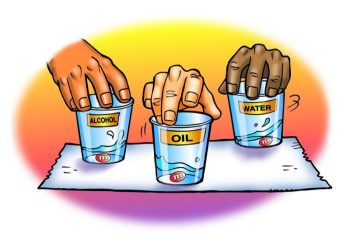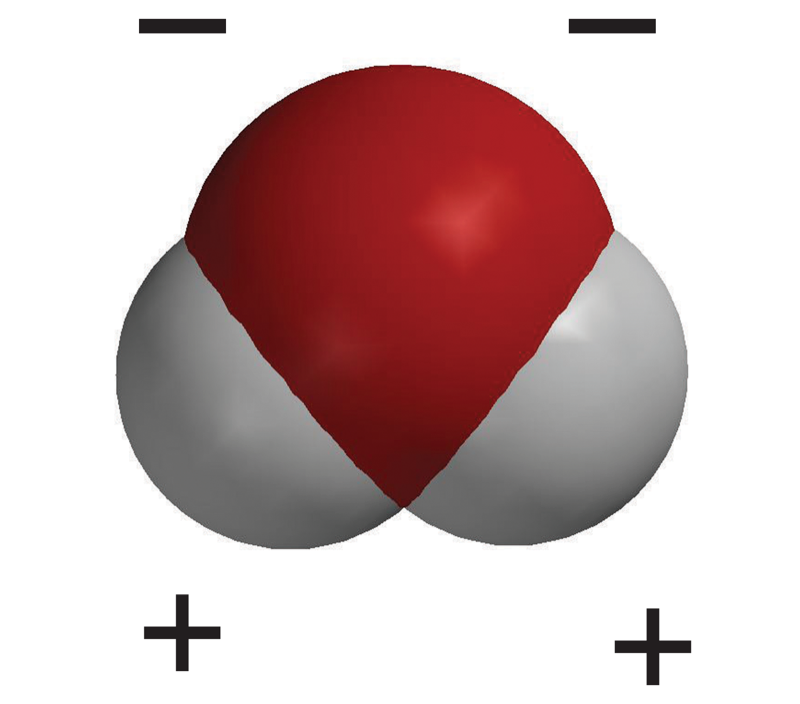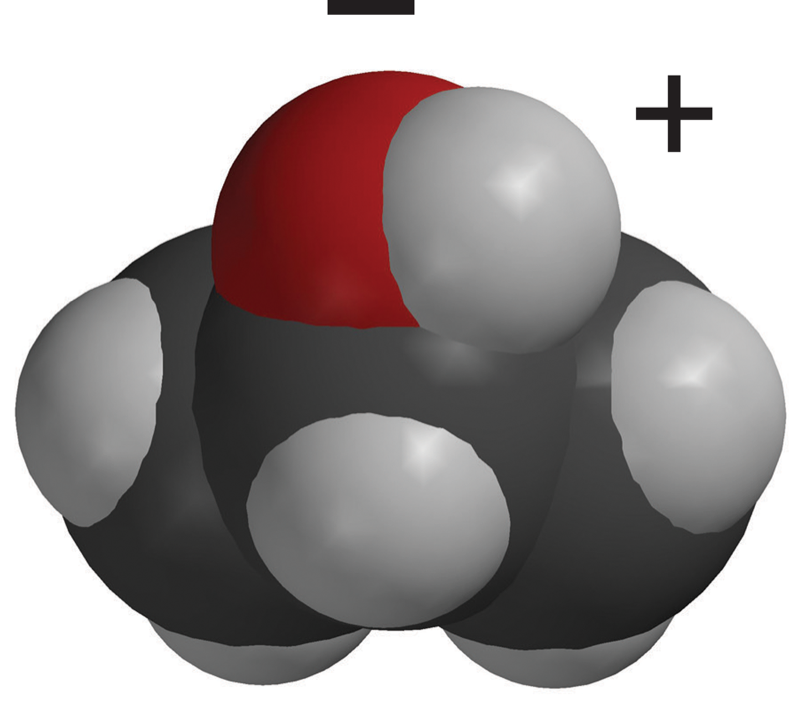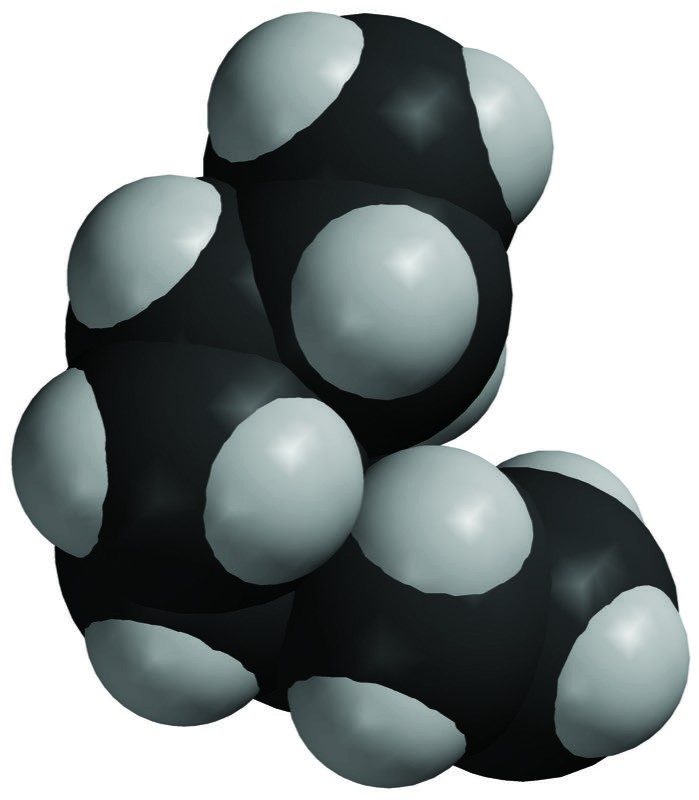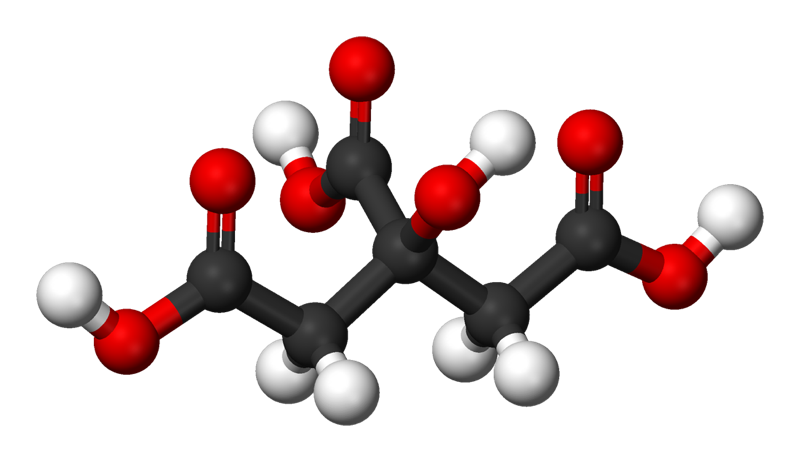Why Does Water Dissolve Sugar?
Lesson Summary Video for teachers
Note: This video is designed to help the teacher better understand the lesson and is NOT intended to be shown to students. It includes observations and conclusions that students are meant to make on their own.
Key Concepts
- For a liquid to dissolve a solid, the molecules of the liquid and solid must attract one another.
- The bond between the oxygen and hydrogen atoms (O–H bond) in sugar (sucrose) gives the oxygen a slight negative charge and the hydrogen a slight positive charge. Sucrose is a polar molecule.
- The polar water molecules attract the negative and positive areas on the polar sucrose molecules which makes sucrose dissolve in water.
- A nonpolar substance like mineral oil does not dissolve a polar substance like sucrose.
Summary
Students will observe the dissolving of the sugar coating from an M&M when it is placed in water. Students will then help design an experiment to see if the type of liquid the M&M is placed in affects how much of the coating dissolves.
Objective
Students will be able to explain, on the molecular level, how the polar characteristic of water and sugar interact so that water dissolves sugar. Students will be able to identify and control the variables in their experiment. Students will also be able to explain why a nonpolar liquid, such as mineral oil, is not good at dissolving sugar.

Safety
Be sure you and the students wear properly fitting goggles. Isopropyl alcohol is flammable. Keep it away from flames or spark sources. Read and follow all warnings on the label. Dispose of isopropyl alcohol and mineral oil according to local regulations. Warn students not to eat the M&M’s. Have students wash hands after the activity.
Materials for Each Group
- M&M’s
- Water
- Mineral oil
- Isopropyl alcohol (70%)
- Small white plastic plate
- 3 clear plastic cups
- White paper
Download All Lesson 5.4 Resources
Get the entire lesson plan and Student Activity Sheet for "Lesson 5.4 - Why Does Water Dissolve Sugar?"
Online Assignments
Supplement in-class learning with interactive, multimedia-rich Google Forms lesson modules, perfect for reinforcing key chemistry concepts and scientific investigation skills.
Instructions
1 Engage
Step 1
Help students realize that the candy coating of an M&M is made mostly of sugar and a bit of coloring.
Distribute M&M’s to students and have them look at the outside candy coating. Then have students break an M&M to look closely at the coating from the inside.
Ask students:
- What do you think the coating of an M&M is made from?
Students will see the layer of color with a layer of white beneath it and suggest that the coating is made of sugar and coloring. Explain that the coating is mostly sugar. - Have you ever noticed what happens to the coating of an M&M when it gets wet?
The color comes off and if it gets wet enough, the entire coating comes off, leaving the chocolate behind.
Tell students that in this activity, they will see what happens to the sugar and color coating of an M&M when it is placed in water.
2 Evaluate
Give each student an activity sheet.
- Lesson 5.4 Student Activity Sheet PDF | DOCX | Google Doc
- Lesson 5.4 Activity Sheet Answers PDF | DOCX | Google Doc
Download the student activity sheet, and distribute one per student.
The activity sheet will serve as the “Evaluate” component of each 5-E lesson plan. The activity sheets are formative assessments of student progress and understanding. A more formal summative assessment is included at the end of each chapter.
Students will record their observations and answer questions about the activity on the activity sheet. The Explain It with Atoms and Molecules and Take It Further sections of the activity sheet will either be completed as a class, in groups, or individually depending on your instructions. Look at the teacher version of the activity sheet to find the questions and answers.
3 Explore
Step 2
Have students place an M&M in a cup of water and observe.
Question to Investigate
What happens to the sugar and color coating of an M&M when it is placed in water?
Materials
- Clear plastic cup
- Water
- M&M
- White paper
Procedure
- Pour enough room temperature water into clear plastic cup so that the water is deep enough to completely cover an M&M and place this cup on a piece of white paper.
- Once the water has settled, place 1 M&M in the center of the cup. Be careful to keep the water and M&M as still as possible. Observe for about 1 minute.
Expected Results
The coating will dissolve from the M&M, revealing a white layer under the color and then the brown chocolate underneath. The colored coating of the M&Ms will collect in a circular pattern around the M&M. Students may also mention the white streaks in the water from the sugar coating.
Step 3
Discuss student observations.
Ask students:
- What do you notice about the M&M and the water?
The color comes off and moves through the water in a circular pattern. - What do you think is happening when the color and sugar come off the M&M?
Point out to students that because the water makes the colored coating come off the M&M and mix into the water, the water is dissolving the sugar and color.
Note: There are actually two processes happening in this activity. The color and sugar are dissolving in the water, but they are also diffusing. In order to focus on the amount that dissolves from an M&M, students should look at the amount of coating missing from the M&M, instead of the size of the circle of color in the water.
Knowing what you do about the polarity of water, why do you think water dissolves sugar?
Students may think that sugar is made of ionic bonds like salt. Or they might think that sugar has positive and negative areas and this is why water is attracted to it.
4 Explain
Step 4
Show students how the polar areas of a sucrose molecule cause it to dissolve in water.
Explain to students that sugar is made of large molecules called sucrose. Each sucrose molecule is made of atoms that are covalently bonded.
Ask students:
The chemical formula for sucrose is C12H22O11. What do these letters and numbers mean?
Sucrose is made up of 12 carbon atoms, 22 hydrogen atoms, and 11 oxygen atoms.
Project the image Sucrose.
Explain that the first picture is a ball-and-stick model of a single sucrose molecule. The next picture is a space-filling model of a single sucrose molecule. The last picture is two sucrose molecules attract- ed to each other. These two molecules will separate from each other when sugar dissolves. Point out that in the areas on a sucrose molecule where oxygen is bonded to hydrogen (O–H bond), the oxygen is slightly negative, and the hydrogen is slightly positive. This makes sucrose a polar molecule.
Project the image Water Dissolves Sucrose.
Explain that a sugar cube (about a half a teaspoon of sugar) is made up of at least one billion trillion sucrose molecules. When sugar dissolves, these whole sucrose molecules separate from one another. The molecule itself doesn’t come apart: The atoms that make up each molecule stay together as a sucrose molecule.
Project the animation Sucrose.
Explain that sucrose has polar areas caused by the same type of oxygen–hydrogen covalent bonds as in the water molecule. Point out the O–H bonds on the outer edges of the molecule. Point out that the bonding of the oxygen and hydrogen in the sucrose makes parts of the sucrose molecule polar in a similar way as in a water molecule. The area near the hydrogen is positive (blue) and the area near the oxygen is negative (red).
Project the animation Water Dissolves Sucrose.
Tell students that sugar molecules are attracted to each other and held together by the attraction between these polar areas of the molecules.
Help students notice how the positive (blue) area of a water molecule is attracted to the negative (red) area of a sucrose molecule. It also works the other way around. The negative (red) area of a water molecule is attracted to the positive (blue) area of the sucrose molecule.
Explain that the positive and negative areas on water molecules interact with these negative and positive parts of sucrose molecules. When the attraction between water molecules and sucrose molecules overcomes the attraction the sucrose molecules have to other sucrose molecules, they will separate from one another and dissolve.
Point out that one whole sucrose molecule breaks away from another whole sucrose molecule. The molecule itself does not come apart into individual atoms.
Note: Although the focus is on dissolving the polar sugar molecules, the food coloring used to color the M&M is also made from polar molecules. This helps explain why the coloring also dissolves.
5 Explore
Step 5
Have students conduct an experiment to compare how well water, alcohol, and oil dissolve the sugar and color coating of an M&M.
Ask students to make a prediction:
Do you think water, alcohol, or oil would be better at dissolving the sugar and color coating of an M&M?
Discuss with students how to design an experiment to compare how well water, alcohol, and vegetable oil dissolve the color and sugar coating from an M&M. Be sure students identify variables such as:
- Amount of water, alcohol, and oil used
- Temperature of each liquid
- Same color of M&M
- Time and location the M&M’s are placed in each liquid
Question to Investigate
Is water, alcohol, or oil better at dissolving the color and sugar coating from an M&M?
Materials
- 3 M&Ms (same color)
- Water
- Mineral oil
- Isopropyl alcohol (70%)
- 3 clear plastic cups
- White paper
Procedure
- Label 3 cups Water, Alcohol, and Oil. Add 15 mL of water, alcohol, and mineral oil to their labeled cups.
- Place the three cups on a white sheet of paper.
- At the same time, add 1 M&M to each liquid. Then gently swirl the liquid and M&M in each cup for about 30 seconds
Expected Results
Water—The sugar and color dissolve from the M&M.
Alcohol—The color dissolves only slightly and the sugar coating doesn’t seem to dissolve.
Oil—Neither the color nor the sugar dissolves
6 Explain
Step 6
Show students the molecular structures for water, alcohol, and oil and discuss how this relates to their observations.
Project the image Polarity of Water, Alcohol and Oil.
Show students the polar areas on a water molecule, isopropyl alcohol molecule, and an oil molecule.
7 Extend
Step 7
Show students the molecular structures for water, alcohol, and oil and discuss how this relates to their observations.
Project the image Citric Acid.
Explain that the projected image is a model of a citric acid molecule. Tell students that citric acid is the substance that gives lemons, limes, grapefruit, and oranges their tangy sour taste. Citric acid is very soluble in water and is dissolved in the water in the fruit.
Ask students:
- Why do you think citric acid is so soluble in water? HINT: The chemical formula for citric acid is C6H8O7.
Every place there is an O–H bond, there is an uneven sharing of electrons. The oxygen atoms in an O–H bond have a slightly negative charge and the hydrogen atoms in the bond have a slightly positive charge. Because water molecules are also polar, the positive ends of water molecules are attracted to the negative areas of the citric acid molecules. The negative ends of water molecules are attracted to the positive areas of the citric acid molecules. These mutual attractions will overcome the attractions citric acid molecules have for other citric acid molecules, causing them to mix thoroughly in the water and dissolve.
What is the 5-E format?
The 5-E instructional model is an approach to teaching and learning that focuses on active engagement, inquiry-based learning, and collaboration.
Downloads
- Lesson 5.4 Student Activity Sheet PDF | DOCX | Google Doc
For Teachers
- Lesson 5.4 Lesson Plan PDF | DOCX | Google Doc
- Lesson 5.4 Activity Sheet Answers PDF | DOCX | Google Doc
Resources for the entire Chapter 5
- Chapter 5 Student Reading PDF | DOCX | Google Doc
- Chapter 5 Test Bank PDF | DOCX | Google Doc
Interactive Lesson Modules
- Lesson 5.4 Online Assignments Google Form
Have Questions? Visit Help Center
